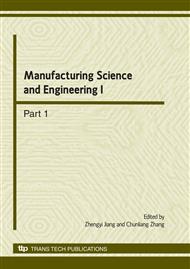p.479
p.484
p.488
p.492
p.496
p.500
p.504
p.510
p.514
The Effect of Precipitates on Anisotropy of Al-Li Alloys 2090 and 2090+Ce
Abstract:
The critical resolved stresses (CRSS) of two kinds of Al-Li alloys 2090 and 2090+Ce in which contained trace addition of cerium are examined. The three heat treatment conditions (solution, peak aging and reversion after peak aging) are used in order to identify the influence of precipitates to CRSS. The experimental results show that the strengthening contribution of T1 Phase is greatly different at various orientation with respect to rolling direction, and the precipitation of T1 phase can weaken the anisotropy of mechanical properties. The T1 phase precipitated in subgain boundaries in peak aged and reverted specimens produce a stronger tendency of delaminating along grain boundary, which is a direct reason for the decrease of anisotropic yield strength.
Info:
Periodical:
Pages:
496-499
Citation:
Online since:
March 2010
Authors:
Price:
Сopyright:
© 2010 Trans Tech Publications Ltd. All Rights Reserved
Share:
Citation:


